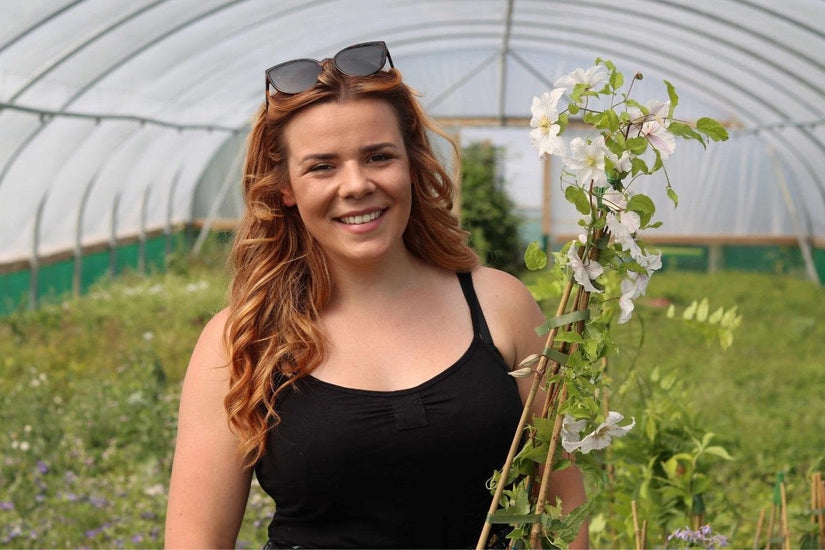Wisteria Plants
When wisteria blooms, summer is on its way! Wisteria is the ultimate feature plant - a vigorous climber with woody vines covered in bunches of warmly fragranced flowers which can transform a wall, pergola or front porch while also attracting bees and butterflies to your garden.
Need help picking?Sort and filter
Cheltenham
Meet Mollie
Climbers grown by specialists at the height of their game
What does it take to grow the strongest and best climbing plants in the show tent? Organic fertilisers, natural pest control and years of dedication from Mollie, our expert grower in Worcestershire. Professionally pruned and checked by hand, they’re guaranteed to put on a gold standard display in your garden, too.
Need help picking?
Wisteria FAQs
When is the best time to plant wisteria?
The best time to plant wisteria is in spring or autumn, when the plant will have plenty of time to develop its root system before the weather gets colder.
What kind of soil does wisteria prefer?
Wisteria will grow happily in any type of well-drained soil, and prefers one that is slightly acidic to neutral (pH 6.0-7.0).
How much sunlight does wisteria need?
Wisteria needs a position in full sun or partial shade. Full sun (six to eight hours of sunlight daily throughout the growth season) is best for flower production, but partial shade (four hours of sunlight) is also fine.
How often should I water my wisteria?
Water your newly planted wisteria regularly, keeping the soil consistently moist but not waterlogged. Once established, wisteria is reasonably drought tolerant but still benefits from occasional deep watering during dry spells. If your soil is very light or sandy, you will need to water your wisteria more often.
How fast does wisteria grow?
Wisteria is a fast-growing plant but don’t worry if it doesn’t seem to grow much in the first couple of years, as growth accelerates as it matures. After a few years your wisteria will start growing like a beast and can put on up to 3m per year.
Should I fertilise my wisteria?
Wisteria doesn’t need feeding, but it can boost flower production if you do. Feed your plant with a high potassium fertiliser such as tomato feed or blood, fish and bone once a year in the spring for the best results.
How do I train my wisteria to climb a trellis or pergola?
Wisteria naturally twines around its supports, but you may need to guide it initially. It can be a heavy plant when it matures, so make sure your supports are strong! Gently wrap the vines around the structure, tying them in loosely if necessary until they start to climb on their own.
How should I prune my wisteria?
Prune your wisteria twice yearly in February and August. For the first few years, focus on training the wisteria into its supports. This means pruning out lower growing branches, training in the stronger side shoots and cutting back side shoots to five buds in early August. As the plant matures, its pruning needs change. In August, cut back shoots of the current season's growth to five leaves. In February, cut back the same shoots, but to three buds. If there’s any dead wood, you can prune it away at any time of year.
Can wisteria grow in containers?
Wisteria can be grown in containers, but it requires large containers and a lot of pruning to keep it manageable - training it as a standard tree is the best way of doing this. Choose the largest container you can find and fill it with a good tree and shrub compost. Water your pot-grown plants well and feed them in spring. You can find more wisteria care advice and tips on choosing wisteria plants in our growers’ help section.








